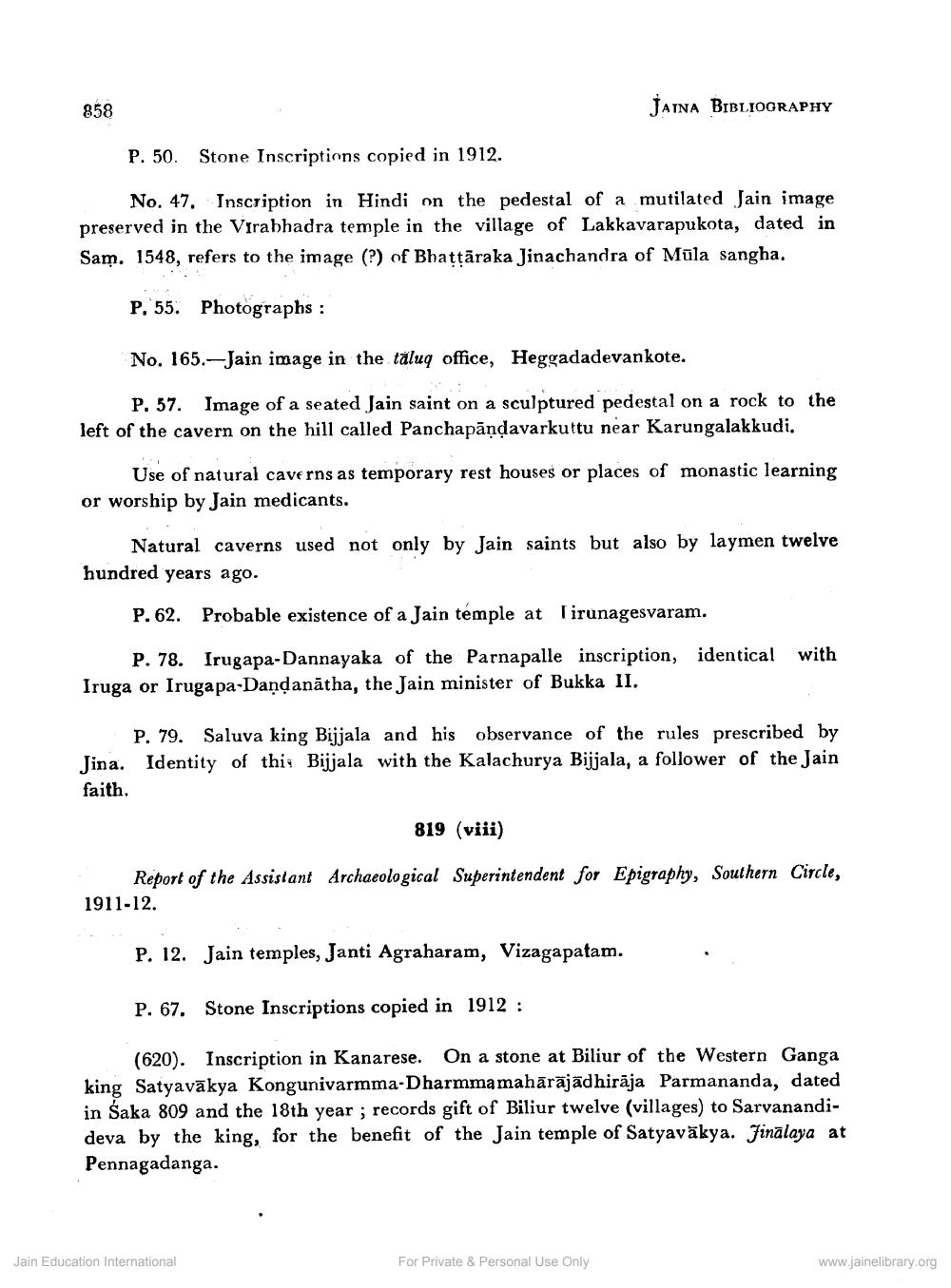________________
858
JANA BIBLIOGRAPHY
P. 50.
Stone Inscriptions copied in 1912.
No. 47, Inscription in Hindi on the pedestal of a mutilated Jain image preserved in the Virabhadra temple in the village of Lakkavarapukota, dated in Sam. 1548, refers to the image (?) of Bhattāraka Jinachandra of Mūla sangha.
P. 55. Photographs :
No. 165.- Jain image in the täluq office, Heggadadevankote.
P. 57. Image of a seated Jain saint on a sculptured pedestal on a rock to the left of the cavern on the hill called Panchapāndavarkuttu near Karungalakkudi.
Use of natural caverns as temporary rest houses or places of monastic learning or worship by Jain medicants.
Natural caverns used not only by Jain saints but also by laymen twelve hundred years ago.
P.62. Probable existence of a Jain temple at Tirunagesvaram.
P. 78. Irugapa-Dannayaka of the Parnapalle inscription, identical with Iruga or Irugapa-Dandanātha, the Jain minister of Bukka II.
P. 79. Saluva king Bijjala and his observance of the rules prescribed by Jina. Identity of this Bijjala with the Kalachurya Bijjala, a follower of the Jain faith.
819 (viii)
Report of the Assistant Archaeological Superintendent for Epigraphy, Southern Circle, 1911-12.
P. 12. Jain temples, Janti Agraharam, Vizagapatam.
P. 67. Stone Inscriptions copied in 1912 :
(620). Inscription in Kanarese. On a stone at Biliur of the Western Ganga king Satyavākya Kongunivarmma-Dharmmamahārājādhirāja Parmananda, dated in Saka 809 and the 18th year ; records gift of Biliur twelve (villages) to Sarvanandideva by the king, for the benefit of the Jain temple of Satyaväkya. Jinalaya at Pennagadanga.
Jain Education International
For Private & Personal Use Only
www.jainelibrary.org




